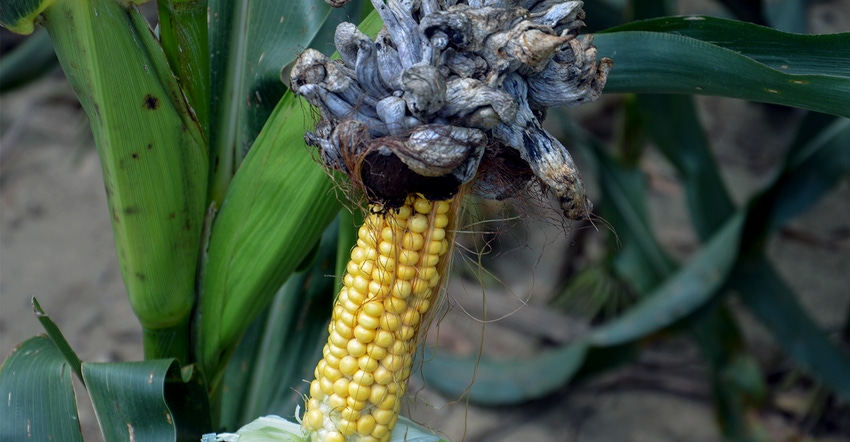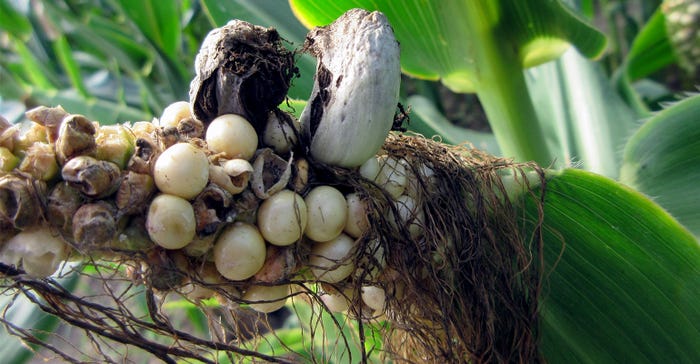
To most corn growers, smut on a corn plant or on the ear is an ugly sight. It means one less ear of corn to harvest. Even the Latin name is ugly: Ustilago maydis. Recently, Dave Nanda spotted smut sitting on top of an ear in a rather unusual formation. It was on a plant on an end row that didn’t have close neighbors.
When Nanda pulled down the husks below the smut, he revealed a relatively normally looking ear with kernels of corn developing normally. You might think it’s a freak of nature for smut to sit on top of a normal ear.
“It’s not a freak,” Nanda insists. The former plant breeder is now an independent crops consultant based in Indianapolis. He is more inclined to call it a marvel of nature rather than a freak.
“It’s just another piece of evidence which proves how hard a corn plant tries to produce viable progeny,” Nanda says. “That is what the corn plant is all about. It doesn’t care how much grain you get. It believes it is producing ‘babies,’ and it wants to produce as many as it possibly can.”
So even with smut developing at the top of the ear, the unaffected portion was still bringing in sugars and filling kernels. It takes more than smut at the top of the ear to cause the plant to give up on its mission to make more progeny, Nanda says.
Smut biology
According to the Purdue University Corn and Soybean Field Guide, smut is caused by a fungus. Silvery galls usually develop on ears but can also develop on stalks and leaves. The picture provided by Charles Woloshuk, Purdue plant pathologist, of a long ear with three silvery galls hanging to the side illustrates the more normal color of the galls.
When mature, the interior of those galls contains black spores. The spores can survive in soil or crop debris. When a young plant is wounded by insects or some other means, the spores can enter the plant, Nanda notes. However, according to the field guide, spores can also enter through silks. The saving grace with smut is that although it’s ugly, it seldom affects enough ears to cause significant economic damage. If you encounter such a situation, the best advice is to seek a more resistant hybrid, Nanda says.
 NORMAL SMUT EAR: This is a more common smut infection found in the field. The entire ear is rendered infected.
NORMAL SMUT EAR: This is a more common smut infection found in the field. The entire ear is rendered infected.

“Probably what happened in the case of the ear I found in the field with the smut bouquet on top was that smut balls had more room to grow than normal,” Nanda says. “Since there was plenty of open space, the fungus could attack from all sides simultaneously. As a result, it formed many smut balls of equal size.”
Beauty is certainly in the eye of the beholder. “With the yellow ear below, it looked like a flower vase,” Nanda quips. “Heck, it was even in Purdue colors.”
About the Author(s)
You May Also Like




